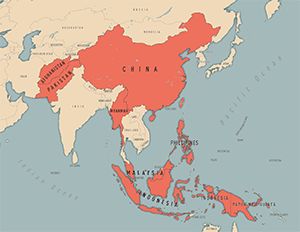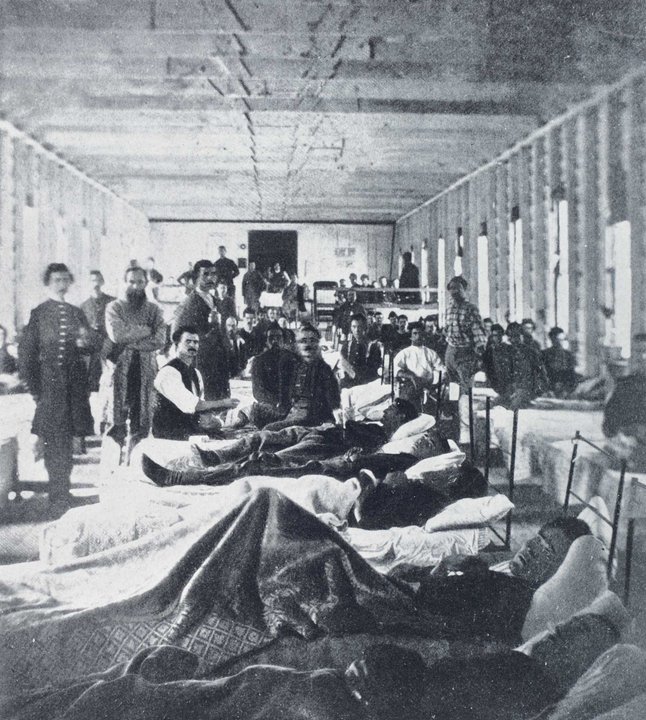Pandemics Throughout Time: How Humanity Has Survived
Humanity has been tested many times before by viruses and bacteria. However, we’ve survived them all. Courtesy of Google Images.
Today’s COVID-19 has brought upon an unprecedented reaction by the United States. Never before have citizens been told to shelter in place inside our homes for months on end to stop the spread of a deadly disease. Of course we’ve had years of a really bad flu that caused people to stock up on hand sanitizer and, worse case scenario, close a couple schools. This, however, is a first for everybody.
This actually isn’t the first major disease outbreak for the United States. In recent memory, there was the Ebola outbreak, however, very little cases developed in the United States thanks to the swift and decisive action of the CDC. In the 1980’s, HIV also began to spread throughout the United States. Even as far back as the founding of the United States, Yellow Fever ravaged big cities.
In the past, reactions such as that which are taking place today occured in Africa, Asia, and Europe. According to Rena Long, AP World History teacher, European cities during the outbreak of the Bubonic Plague were placed in quarantine to try to stop the spread of disease. However, with almost no knowledge of microorganisms and sterilization techniques, quarantines often didn’t do much to mitigate the spread of disease.

In 1347, the Bubonic Plague ravaged Europe, becoming one of the most deadly pandemics in history. Courtesy of Google Images.
“I know that when the Bubonic Plague ravaged Europe, they closed down their cities. They even trapped infected people in buildings so they could not infect others. This is unprecedented because we are so globally connected at this time. This is a major historical event in the making. This is a brand new virus. No one knows much about it,” said Long.
The closest reaction taken in the past to today was in the 1950’s, when Polio became widespread throughout the United States. Polio lives in an infected person’s throat and intestines, and most commonly produced flu-like symptoms. However, according to the CDC, about 1 in 200 people with the disease were afflicted with paralysis, which could even go so far as to paralyze the lungs and diaphragm, requiring a machine called an Iron Lung to keep a patient alive.
“Paralysis is the most severe symptom associated with polio, because it can lead to permanent disability and death. Between 2 and 10 out of 100 people who have paralysis from poliovirus infection die, because the virus affects the muscles that help them breathe,” according to the CDC.
In reaction to Polio, parents feared to let their children play outside, especially in the summer when the virus seemed to peak. The government issued quarantines and shelter-in-places to try to minimize the disease’s spread, but Polio was still an immensely infectious disease. Only after the creation and distribution of a vaccine did the disease finally get eradicated in the U.S.. However, in developing countries, Polio still exists, albeit becoming rarer every day due to the efforts of governments to distribute vaccines.

Polio is still an issue in many countries today, including many developing nations. This map shows where polio is still prevalent in Asia. Courtesy of the CDC.
Another disease that invoked a similar reaction was the Influenza Outbreak of 1918. This, however, could be known better as the Spanish Flu. The flu was first observed by the U.S. in military personnel. It eventually spread to one third of the world’s population at the time, 500 million people, and 50 million died.
The disease seemed to hit the healthy the hardest, as people between 20 and 40 years old were at the highest risk of death. Despite the high death rate, world governments did what they could to limit the spread of the disease. Much like today, they quarantined infected individuals and limited public gatherings, according to the CDC.
Despite major strides in medical technology from the years when polio and the Spanish Flu ravaged the U.S., COVID-19 still spreads around the world rapidly. Quarantines and shelter in places can only do so much. Listening to public health officials has shown in the past to be one of the most effective ways of minimizing the damage a pandemic can do. The CDC recommends staying at home, practicing good hygiene, and avoiding, if at all possible, social gatherings of more than 10 people. While it might seem new for most people, this situation has occurred, although in various levels of severity, throughout time.

